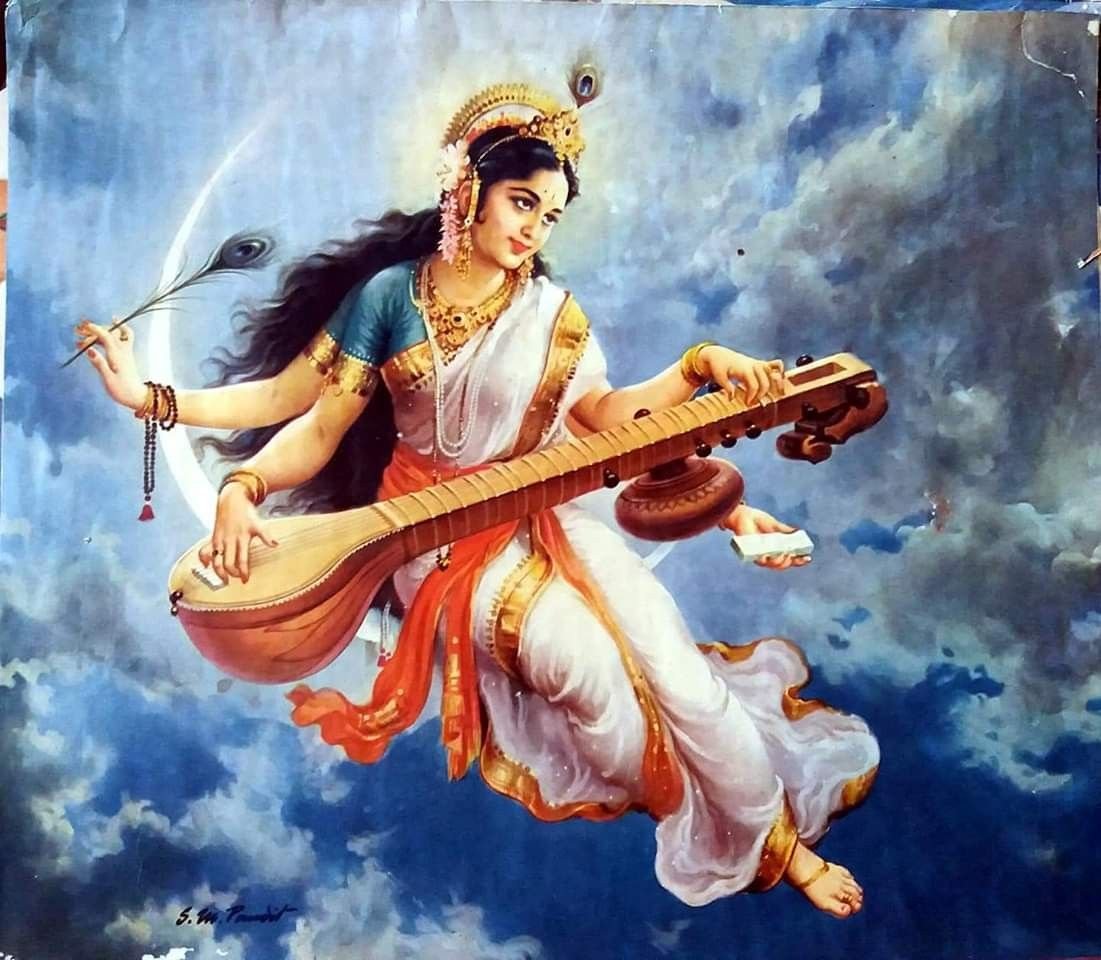Vasanta Panchami
Bharat is a land of festivals. Every season is marked with its own special festival. Of course, the first season of the year is spring and the first festival that comes in Uttarayana, welcoming the advent of the vernal season is known as Vasanta Panchami. Vasanta Panchami marks the end of the winter season and the beginning of spring.
Vasanta means spring and panchami is “five.” So, this festival is always celebrated on the 5th day of the waxing phase (Shukla paksha) of the moon in the month of Magha. The time between sunrise and mid-day is considered to be “purvahnakala” or the most auspicious time of the day to do Saraswati puja. In fact, this time is the most auspicious time to start any new venture.
The festival of Vasanta Panchami is dedicated to Saraswati, the goddess of knowledge and wisdom. She is said to have been born on this day. Vasanta Panchami is considered to be her birthday. Many people initiate their children into a formal educational program on this day. Hence, this day is also known as Vidya-arambham – the start of education.
The Brahma Purana says that Lord Krishna granted a boon to Saraswati that she would be worshiped on Vasanta Panchami. Apart from Saraswati, Lord Ganesha, Surya, Lord Vishnu, and Shiva are also worshiped during this puja. Students place their pens, books, and pencils at the feet of the goddess to be blessed by her before they start their new school year.
The state of Bihar celebrates the founding of the Deo-Sun Mandir (a shrine dedicated to the Sun God, Surya) on Vasanta Panchami. The sun brings an end to winter, and provides the precious sunlight needed for trees to grow new leaves, and flowers to blossom. After months of very short and very cold days, Surya’s warmth invigorates and energises people out of their enforced seclusion and inspires them to take up the challenges of life.
Yellow is the colour of spring. It signifies the brilliance of nature and the vibrancy of life. The fields will be ablaze with this colour since this is the time for the mustard crop. Even the sweets that are offered to Saraswati on this day are yellow in colour. A special sweet called Kesar halwa which is bright yellow is prepared from flour, sugar, nuts, saffron and cardamom powder. Ladies who participate in the puja also dress up in yellow attire.
As we have seen kite flying is popular on Makara Sankranti day. It has also become part of this festival.
There are two popular stories connected with this festival. This is supposed to be the day on which Saraswati blessed the great Sanskrit poet Kalidasa who lived during the 5th century. The legend goes that there was once an extraordinarily intelligent princess named Vidyottama who had defeated many prominent scholars in debate. When it was time for her to marry, she declared she would only marry a person who was more intelligent than her. A group of pundits, however, decided they would teach her a lesson by tricking her into marrying a fool. One day they came across a man who was trying to cut the same branch as he was sitting on. Deciding this was the fool they were looking for, the men presented him to the princess as a highly learned sage, and persuaded her to marry him. Deceived by the pundits, she agreed to a swift marriage with Kalidasa. When Vidyottama discovered that Kalidasa was a fool, she threw him out of the palace. Dejected and ashamed, Kalidasa determined to end his life, but was stopped by the Goddess Saraswati, who appeared before him and told him to take a dip in the nearby river. Following her instruction, he submerged himself in the water. When he came out, he discovered that he was endowed with incredible intelligence and wisdom. He became one of the greatest poets of Bharat. This is why devotees pray to Saraswati on Vasanta Panchami in the hope that they would be endowed with great wisdom.
We have always heard that Kalidasa was blessed by Kali and not Saraswati so how can we reconcile these two stories. The fact is that most people don’t know that there are seven tantric forms of the goddess Saraswati. These are Chintamani Saraswati, Jnana Saraswati, Neela Saraswati, Ghata Saraswati, Kini Saraswati, Antariksha Saraswati and Maha Saraswati.
Of these the one who helped Kalidasa was Neela Saraswati. She also appears in the Dasha Mahavidyas as Matangi. There is a mandir to Neela Saraswati in Belwar village of Barsoi block in Katihar district which was made by Kalidasa himself. She is the one who is capable of bestowing all wisdom.
Another narrative connected to Vasanta Panchami is the story of Kamadeva, the God of Love. The story goes that Parvati, the daughter of the king of the Himalayas, was deeply devoted to Shiva and wanted him as her husband. Shiva, however, had gone into deep meditation after his wife, Sati, had died, and thus nothing Parvati tried could get his attention. Kamadeva, the God of Love, was eventually asked to break Shiva’s tapas and incite in him a desire for Parvati who was, in fact, Sati in her previous life. Kama was very proud of his powers so he agreed with alacrity. He created a congenial spring-time atmosphere, and shot five desire-inducing arrows at Shiva. Furious at having his meditation disturbed, Shiva opened his third eye and immediately Kamadeva was burnt to cinders. Rati, his bereft wife approached Shiva and begged him to bring her husband back to life. Shiva eventually brought him to life on this day of Vasanta Panchami!
The world has passed through two years of bitterness and ill health with Covid-19 so let us hope that this day of Vasanta Panchami inaugurates everyone into a new year of hope and health. This year 2022 Vasanta Panchami falls on February 5th.
Hari Aum Tat Sat!

